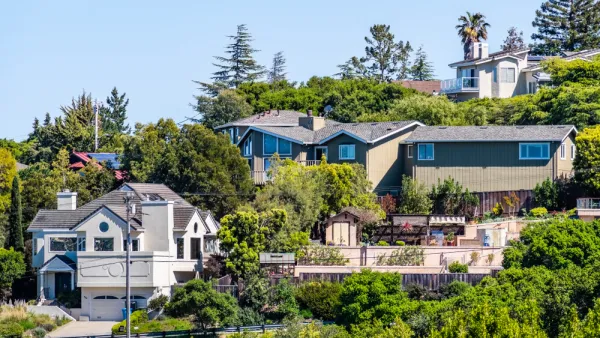Insider knowledge on one of the most controversial components of a groundbreaking plan.

Erika Morphy and Neisen Kasdin, the latter the former mayor of Miami Beach and current managing partner of Akerman LLP's Miami office, sit down for a question and answer session on the subject of the Special Area Plans in the Miami 21 plan—a groundbreaking plan adopted in 2009 as the largest form-based code to date.
"Special Area Plans (SAPs) permit new uses, such as housing and retail, on land that was previously zoned for industrial or other bygone uses," explains Morphy before commencing the Q&A. "The SAP designation sparked some of the city’s most successful developments, but has lately been the target of vigorous opposition, culminating in a January [2020] vote by the Planning, Zoning and Appeals Board to recommend its repeal."
Kasdin, who clearly supports SAPs as catalysts for large, acclaimed investments in the city of Miami, including the Miami Design District and Brickell City Centre, explains how SAPs work:
SAPs are a wonderful planning tool. They allow for the master planning of parcels greater than nine abutting acres and promote flexibility and creativity in urban design, including creating public spaces and improvements and accommodating a variety of architectural styles. They also enable unique land uses – such as large retail centers, hospitals, schools and technology districts – that can’t be accommodated under existing zoning regulations.
Kasdin and Morphy discuss the opposition from community activists that led to the repeal of SAPs in 2020, and some of the ways that SAPs can be adjusted to prevent some of the abuses that Kasdin also acknowledges in addition to the praise offered above. The city of Miami announced the formation of a task force to reform Miami 21 and Special Area Plans earlier this year.
FULL STORY: Neisen Kasdin on Miami 21’s Special Area Plans

National Parks Layoffs Will Cause Communities to Lose Billions
Thousands of essential park workers were laid off this week, just before the busy spring break season.

Retro-silient?: America’s First “Eco-burb,” The Woodlands Turns 50
A master-planned community north of Houston offers lessons on green infrastructure and resilient design, but falls short of its founder’s lofty affordability and walkability goals.

Delivering for America Plan Will Downgrade Mail Service in at Least 49.5 Percent of Zip Codes
Republican and Democrat lawmakers criticize the plan for its disproportionate negative impact on rural communities.

Test News Post 1
This is a summary

Test News Headline 46
Test for the image on the front page.

Balancing Bombs and Butterflies: How the National Guard Protects a Rare Species
The National Guard at Fort Indiantown Gap uses GIS technology and land management strategies to balance military training with conservation efforts, ensuring the survival of the rare eastern regal fritillary butterfly.
Urban Design for Planners 1: Software Tools
This six-course series explores essential urban design concepts using open source software and equips planners with the tools they need to participate fully in the urban design process.
Planning for Universal Design
Learn the tools for implementing Universal Design in planning regulations.
EMC Planning Group, Inc.
Planetizen
Planetizen
Mpact (formerly Rail~Volution)
Great Falls Development Authority, Inc.
HUDs Office of Policy Development and Research
NYU Wagner Graduate School of Public Service





























